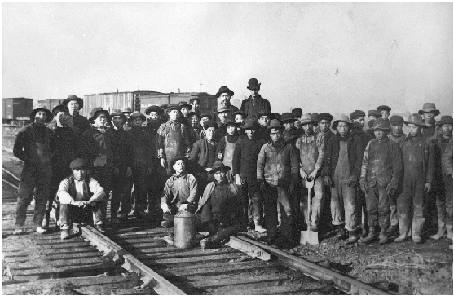Building the Railway

Chinese workers on the Canadian Pacific Railway
(Image D-07548 courtesy of the Royal BC Museum and Archives)
Before 1885, when the completion of the Canadian Pacific Railway (CPR) made movement across the country cheap and convenient, British Columbia was difficult to access from other parts of Canada. It was easier, cheaper and faster to get to British Columbia from Hong Kong than from Halifax. Creating a better transportation system was essential to connect the new Confederation.
With the beginning of the construction of the CPR in the 1880s, Chinese workers were crucial for building the difficult western sections of the railway. Chinese railway workers were brought by ship from both California and China to start building the CPR from the west coast at the same time that European labourers began building the eastern section from the east coast. Over the course of construction and by the end of 1882, of the 9,000 railway workers, 6,500 were Chinese Canadians. They were employed to build the B.C. segment of the railway through the most challenging and dangerous terrain.
Chinese workers were paid $1.00 a day, and from this $1.00, they had to pay for their food and gear. White workers were paid $1.50 to $2.50 per day and did not have to pay for provisions. As well as being paid less, Chinese workers were given the most dangerous tasks, such as handling the explosive nitroglycerin used to break up solid rock. Due to the harsh conditions they faced, hundreds of Chinese Canadians working on the railway died from accidents, winter cold, illness and malnutrition.
Although Chinese Canadian workers faced and overcame great obstacles to help build the CPR, they were left out of the national celebration surrounding its completion. In the iconic historic photograph of CPR Director Donald Alexander Smith driving the ceremonial “last spike,” when the western and eastern sections of the CPR finally met in Craigellachie, British Columbia, all of the Chinese Canadian workers were cleared from view. Many people have pointed out the lingering injustice captured in that image: there is not a single Chinese Canadian worker in the photograph, even though Chinese Canadian labourers suffered, toiled and died building the railway that has come to symbolize the unity of Canada from coast to coast.
